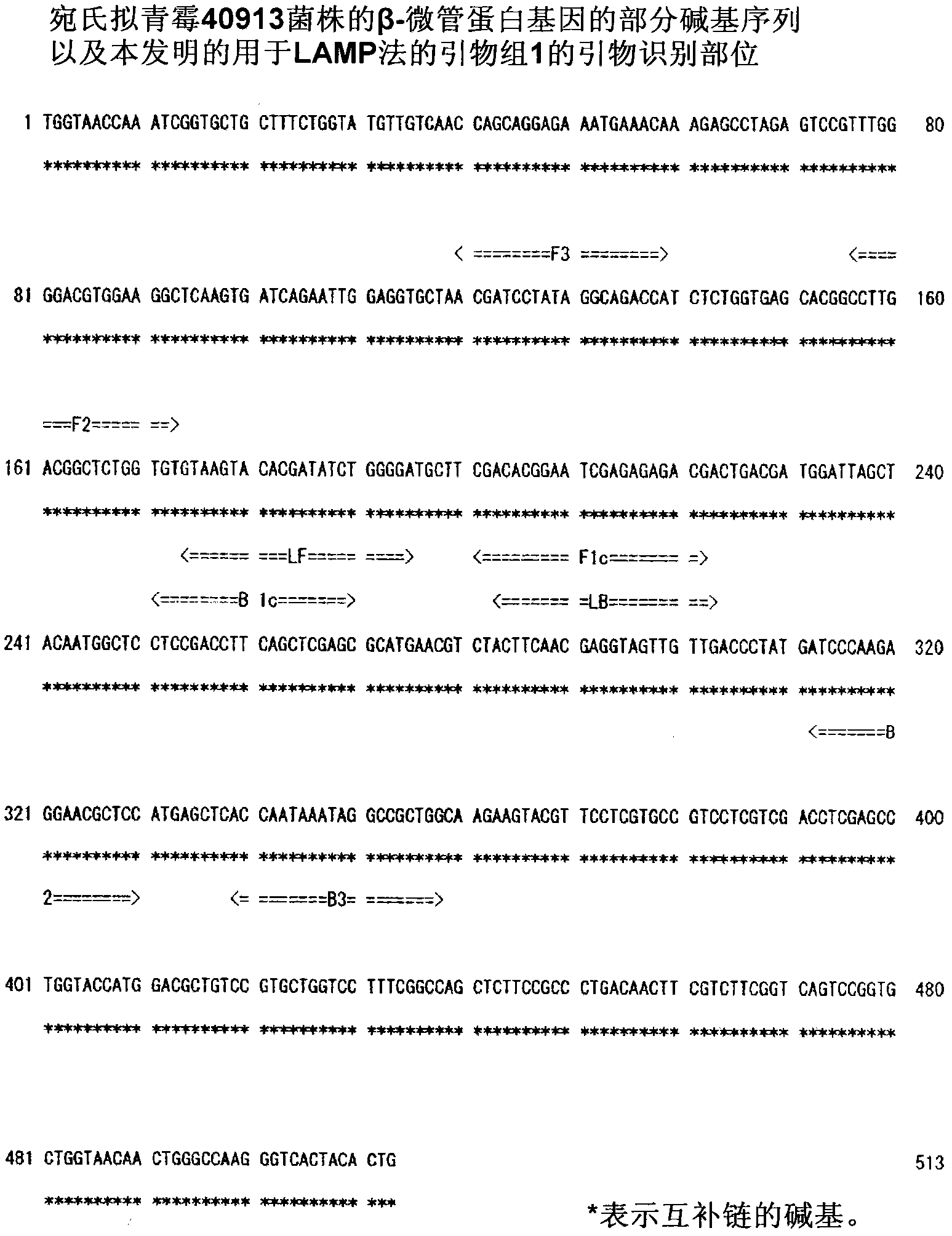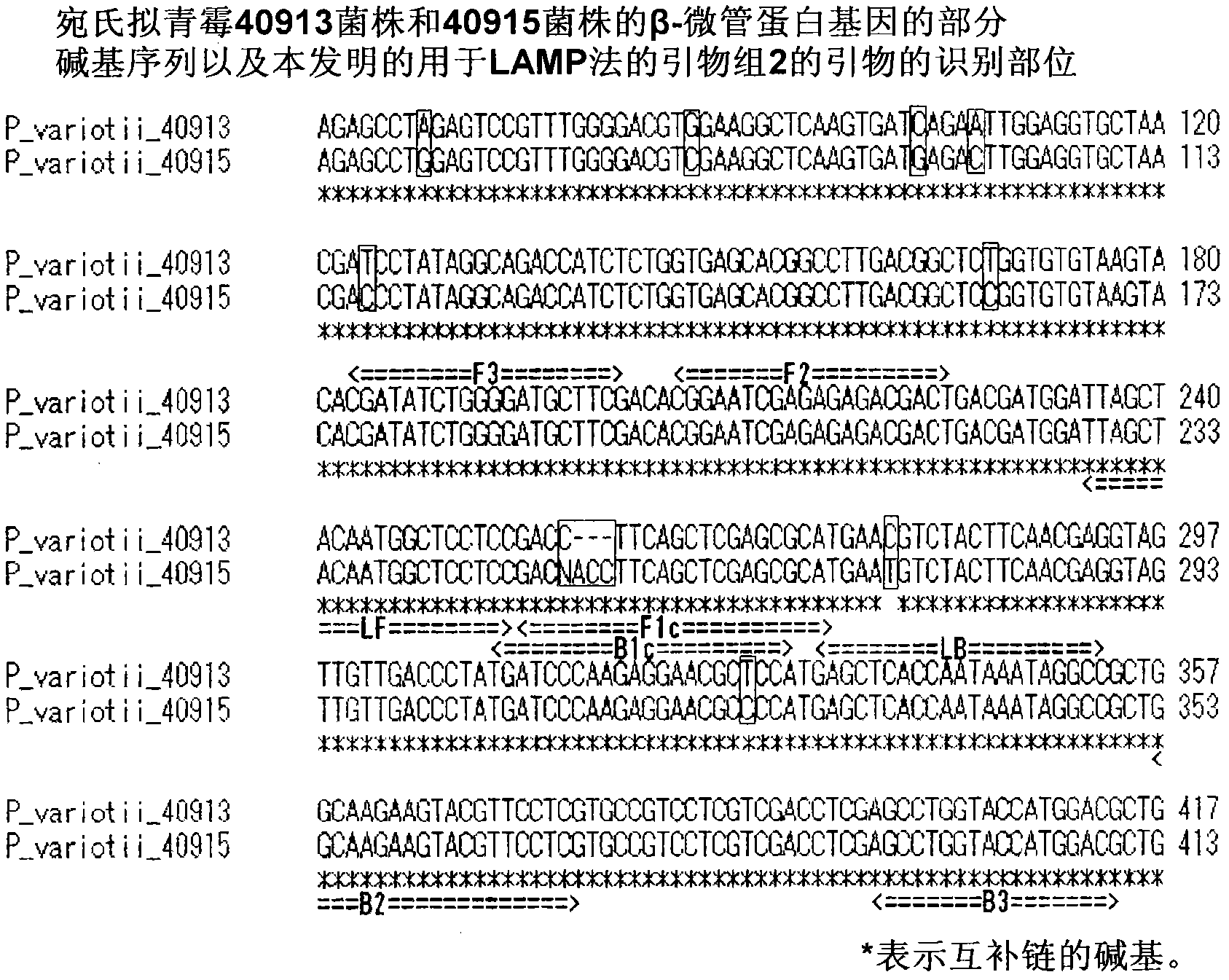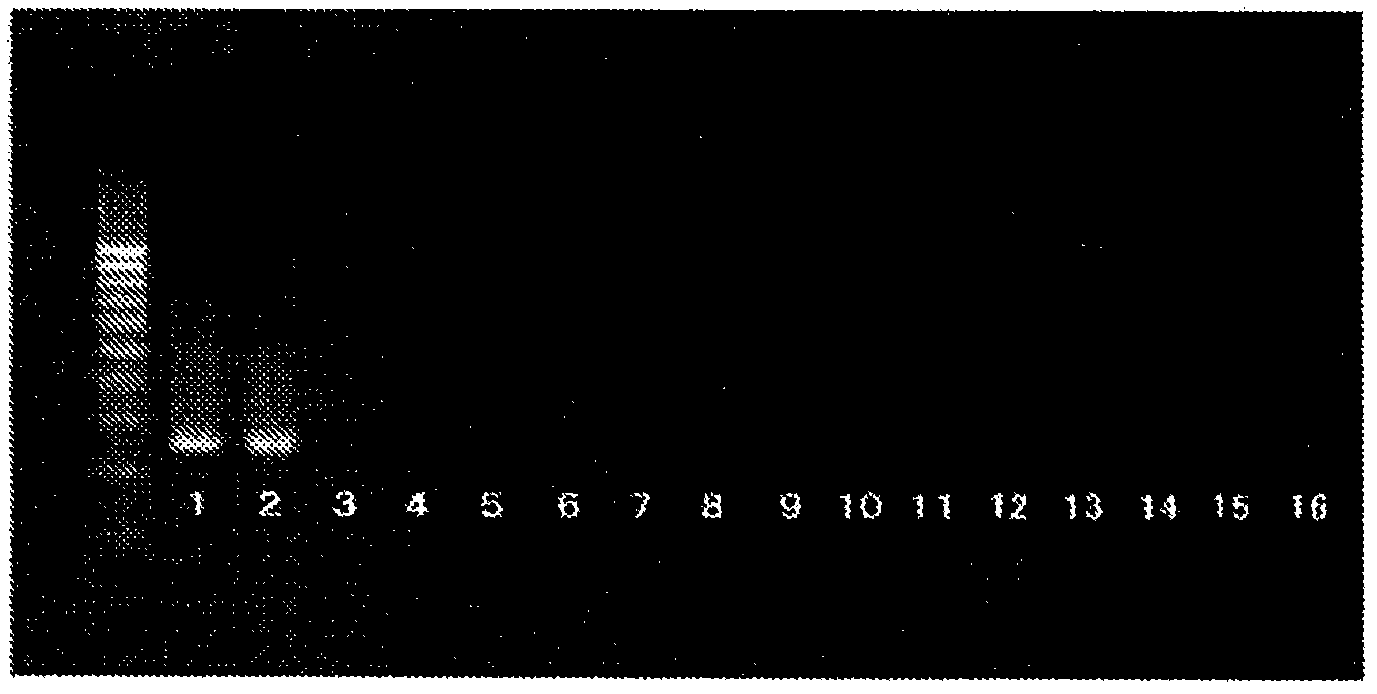Method for detection of paecilomyces variotii
A technology of Paecilomyces variotii and its detection method, which is applied in the field of detection of Paecilomyces variotii, can solve the problem of difficult specific and rapid detection of Paecilomyces variotii, and the specific gene region of Paecilomyces variotii has not been elucidated And other issues
- Summary
- Abstract
- Description
- Claims
- Application Information
AI Technical Summary
Problems solved by technology
Method used
Image
Examples
Embodiment 1
[0181] Example 1 Determination of the base sequence of the β-tubulin gene of Paecilomyces variabilis by PCR
[0182] The test bacteria were placed in potato dextrose agar slant medium and cultured in the dark at 25°C for 7 days. Use Gen Torukun TM (Produced by Takara Bio Co., Ltd.) to extract DNA from bacteria. For the PCR amplification of the target site, PuRe TaqTM Ready-To-Go PCR Beads (produced by GE Health Care UK LTD) were used, and Bt2a (5'-GGTAACCAAATCGGTGCTGCTTTC-3', sequence number 34), Bt2b (5'-ACCCTCAGTGTAGTGACCCTTGGC) were used as primers -3', serial number 35) (Glass and Donaldson, Appl Environ Microbiol 61: 1323-1330, 1995). The amplification conditions were that the denaturation temperature of the length of the β-tubulin portion was 95°C, the annealing temperature was 59°C, and the extension temperature was 72°C, and 35 cycles were performed. The PCR product was purified using Auto SegTM G-50 (manufactured by Amersham Pharmacia Biotech). The PCR product was l...
Embodiment 2
[0204] Example 2 Detection of Paecilomyces variabilis by LAMP method
[0205] (1) Design and synthesis of primers
[0206] Based on the specific nucleotide sequence regions of Paecilomyces variegii in the above-mentioned Example 1 (SEQ ID NOs. 1 to 4 and 22 to 33), oligonucleotides represented by the nucleotide sequences described in SEQ ID NOs: 10 to 15 were designed The composition of the primers was commissioned by E Genome order (Fujitsu System Solution Co., Ltd., serial numbers 10 and 11, 5 pmol grade; serial numbers 12 and 13, 40 pmol grade; serial numbers 14 and 15, 20 pmol grade, all column purified products) synthesis and purchase Into.
[0207] (2) Preparation of the test object
[0208] As fungi used for evaluating the effectiveness of the designed primers, namely Paecilomyces variabilis and other heat-resistant bacteria, the fungi shown in Table 3 were used. As these fungi, those purchased and used are fungi kept in the Center for Fungal Medicine, Chiba University School...
Embodiment 3
[0223] Example 3 Detection of Paecilomyces variabilis by LAMP method
[0224] (1) Design and synthesis of primers
[0225] Based on the specific base sequence region of Paecilomyces variabilis (Sequence Nos. 1 to 4 and 22 to 33) in the above-mentioned Example 1, an oligonucleotide represented by the base sequence described in SEQ ID NO: 16 to 21 was designed The composition of the primers was commissioned by E Genome order (Fujitsu System Solution Co., Ltd., serial numbers 16 and 17, 5 pmol grade; serial numbers 18 and 19, 40 pmol grade; serial numbers 20 and 21, 20 pmol grade, all column purified products) synthesis and purchase Into.
[0226] (2) Preparation of the test object
[0227] As fungi used to evaluate the effectiveness of the designed primers, that is, Paecilomyces variabilis, other heat-resistant bacteria and general molds, the fungi shown in Table 4 were used. As these fungi, those purchased and used are fungi kept in the Center for Fungal Medicine, Chiba University Sc...
PUM
| Property | Measurement | Unit |
|---|---|---|
| temperature | aaaaa | aaaaa |
Abstract
Description
Claims
Application Information
 Login to View More
Login to View More - R&D
- Intellectual Property
- Life Sciences
- Materials
- Tech Scout
- Unparalleled Data Quality
- Higher Quality Content
- 60% Fewer Hallucinations
Browse by: Latest US Patents, China's latest patents, Technical Efficacy Thesaurus, Application Domain, Technology Topic, Popular Technical Reports.
© 2025 PatSnap. All rights reserved.Legal|Privacy policy|Modern Slavery Act Transparency Statement|Sitemap|About US| Contact US: help@patsnap.com



